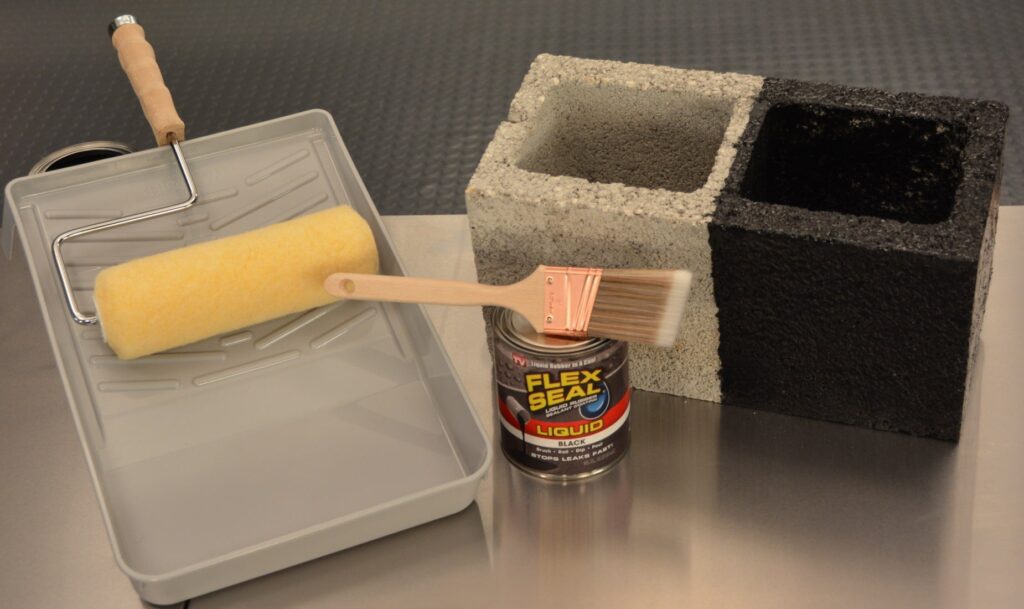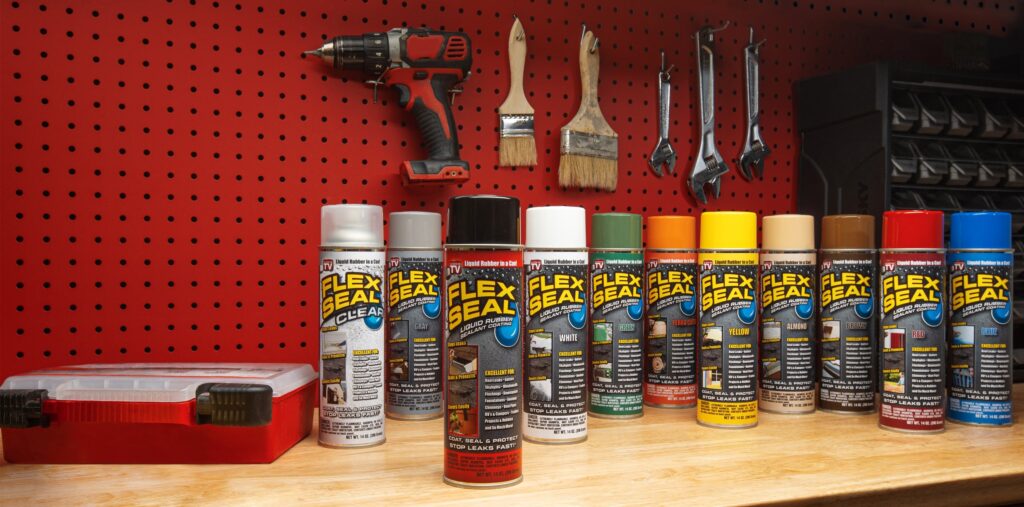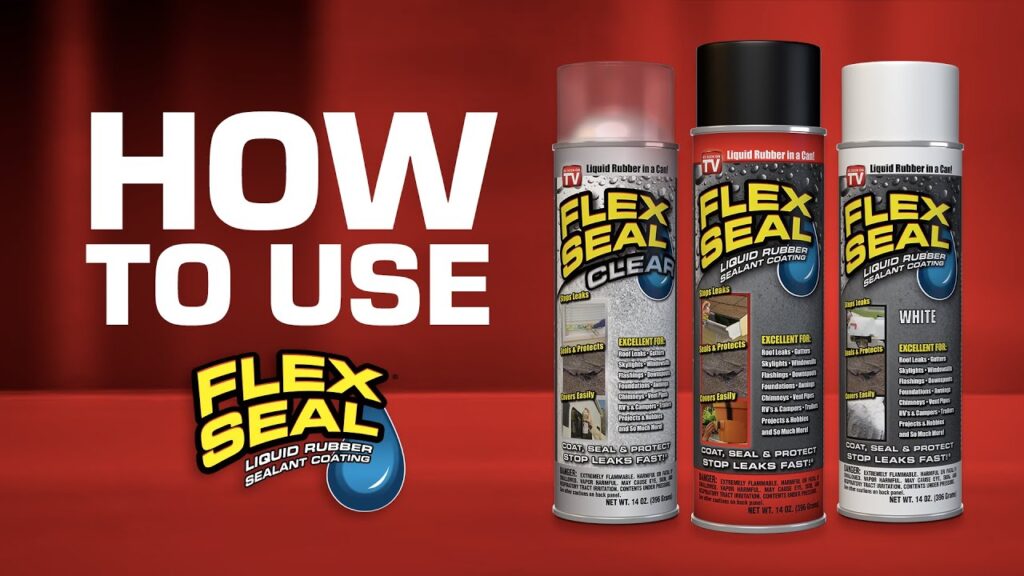Flex Seal is an exceptional product renowned for its versatility and effectiveness when it comes to sealing leaks and cracks. However, it is crucial to understand that there are certain surfaces on which the use of Flex Seal is not recommended. It is imperative to exercise caution and avoid applying this robust sealant on surfaces that are constantly exposed to high temperatures, such as exhaust pipes, engines, or stovetops. Additionally, it is important to avoid using this product on surfaces that are submerged in water for prolonged periods, as it may not provide a durable and long-lasting seal. By being mindful of these precautions, you can ensure the efficient and effective usage of Flex Seal while minimizing any potential risks or disappointments.
Surfaces to Avoid When Using Flex Seal
Flex Seal is a highly versatile product known for its ability to seal and protect various surfaces. However, not all surfaces are suitable for this popular sealant. It is crucial to understand which surfaces to avoid when using Flex Seal to ensure optimal performance and avoid any potential damage. In this article, we will explore different surface types and discuss why they should not be treated with Flex Seal.
1. Wood Surfaces
1.1 Unfinished Wood
Unfinished wood surfaces, such as raw or untreated wood, should not be treated with Flex Seal. This is because the natural wood pores and textures need to breathe to maintain their integrity. Applying Flex Seal onto unfinished wood can restrict the passage of air and moisture, leading to the potential decay, warping, or discoloration of the wood.
1.2 Outdoor Wood
While Flex Seal is suitable for many outdoor applications, it should not be used on outdoor wood surfaces. The constant exposure to harsh weather conditions, UV rays, and temperature fluctuations can cause the Flex Seal coating to degrade prematurely. Additionally, the natural expansion and contraction of wood due to changes in moisture can lead to the cracking or peeling of the Flex Seal layer.
1.3 Wooden Floors
Using Flex Seal on wooden floors is not recommended. Floors, especially those subjected to heavy foot traffic, require specific sealants and coatings designed specifically for flooring materials. Flex Seal does not provide the necessary durability and resistance required for flooring applications. Moreover, it may create a slippery surface, posing a safety hazard.
1.4 Painted Wood
Applying Flex Seal directly onto painted wood surfaces is not advisable. The sealant’s strong adhesive properties may cause the paint to peel off, resulting in an uneven and unsightly appearance. Additionally, if Flex Seal is applied over areas with chipped or flaking paint, it may not adhere properly, rendering it ineffective in providing the intended seal.

This image is property of cdn.shopify.com.
2. Fabrics and Textiles
2.1 Upholstered Furniture
Upholstered furniture, such as sofas, chairs, and mattresses, should not be treated with Flex Seal. The fabric-covered surfaces require specialized cleaning and maintenance products to ensure their longevity and appearance. Flex Seal may alter the fabric’s texture, color, or breathability, compromising its overall quality and diminishing the comfort it offers.
2.2 Clothing and Accessories
Flex Seal is not designed for use on clothing or accessories. Applying the sealant on fabrics can lead to staining, discoloration, or damage to the garment’s fibers. It is crucial to follow laundry guidelines and use appropriate cleaning products to preserve the integrity of textiles, rather than relying on sealants like Flex Seal.
2.3 Carpets and Rugs
When it comes to carpets and rugs, the use of Flex Seal is not recommended. The nature of carpets and rugs involves regular vacuuming, cleaning, and occasional steam treatments. The application of Flex Seal can interfere with these maintenance procedures and the overall appearance of the carpet. Additionally, the adhesive properties of Flex Seal may create an undesirable and challenging cleaning experience.

This image is property of cdn.shopify.com.
3. Metal Surfaces
3.1 Aluminum
While Flex Seal is suitable for many metal surfaces, it is not recommended for use on aluminum. Aluminum surfaces are often exposed to moisture, especially in outdoor settings, and may require more specialized sealing methods. Flex Seal might not offer adequate protection against oxidation or corrosion, potentially compromising the aluminum’s longevity and structural integrity.
3.2 Copper
Similar to aluminum, Flex Seal should not be used on copper surfaces. Copper is a reactive metal that oxidizes and develops a desirable patina over time. Applying Flex Seal to copper may impede this natural aging process and interfere with the characteristic appearance of copper surfaces.
3.3 Brass
Brass, like copper, should be kept clear of Flex Seal applications. Brass is often used for ornamental purposes, and its aesthetic value relies on a consistent and even patina. Flex Seal can disrupt this patina, leading to an inconsistent and unsightly appearance on brass surfaces.
3.4 Stainless Steel
Using Flex Seal on stainless steel surfaces is generally not recommended. Although stainless steel is highly resistant to corrosion and staining, the application of Flex Seal may create a visible and uneven layer. This can compromise the stainless steel’s shiny and smooth finish, detracting from its aesthetic appeal.

This image is property of flexsealproducts.com.
4. Electronic Devices
4.1 Smartphones
Applying Flex Seal to smartphones or any electronic devices is highly discouraged. Electronics require proper ventilation to prevent overheating and maintain their functionality. Flex Seal’s sealing properties can hinder heat dissipation, potentially causing devices to overheat, malfunction, or even become a fire hazard. It is crucial to use only manufacturer-recommended methods and products for maintaining electronic devices.
4.2 Computers
Just like smartphones, computers and other electronic devices should not be treated with Flex Seal. The sensitive components and intricate circuitry of computers require adequate airflow to prevent overheating. Using Flex Seal on computer casings or internal parts can interrupt the cooling mechanisms, leading to performance issues and potential damage to the valuable electronics.
4.3 Appliances
When it comes to household appliances, the use of Flex Seal is generally not advised. Appliances often have ventilation systems to release excess heat generated during their operation. Applying Flex Seal to these appliances can disturb the ventilation, potentially causing excessive heat buildup, decreased efficiency, and even appliance failure. It is best to consult the appliance manufacturer or professional service technicians for appropriate maintenance and repairs.
This article covers just a few of the surfaces that should not be treated with Flex Seal. It is always crucial to read and follow the manufacturer’s guidelines and instructions when using any product. By understanding the limitations of Flex Seal and being mindful of the specific requirements of different surfaces, you can ensure the longevity, functionality, and aesthetic appeal of your belongings.

This image is property of i.ytimg.com.
